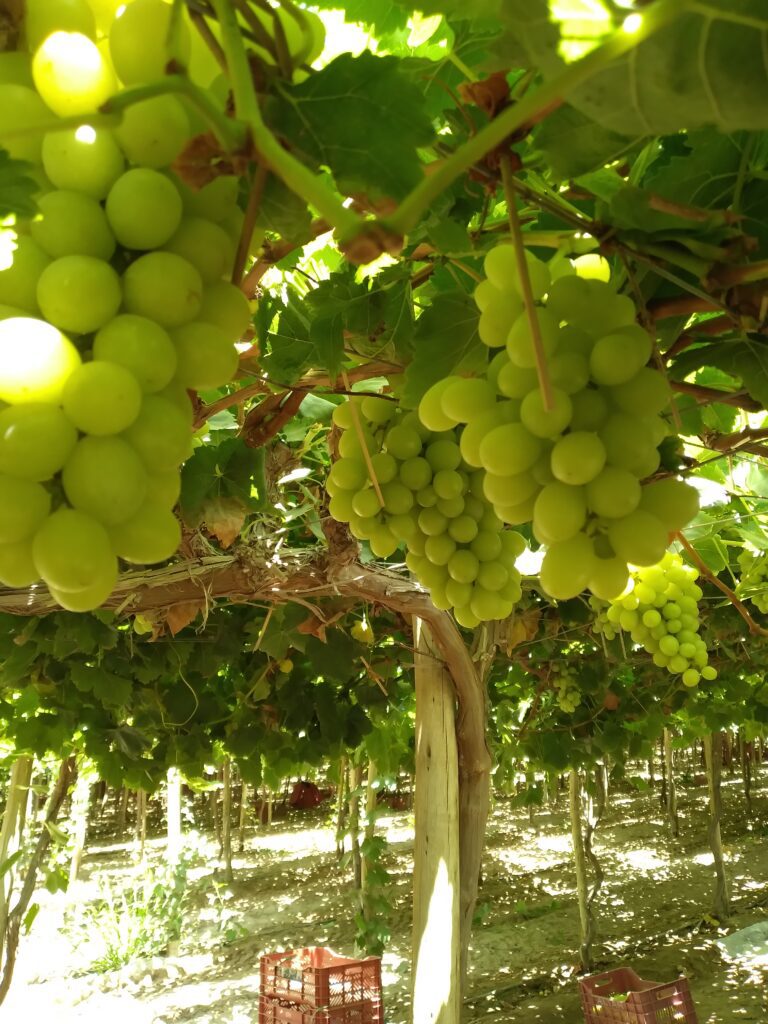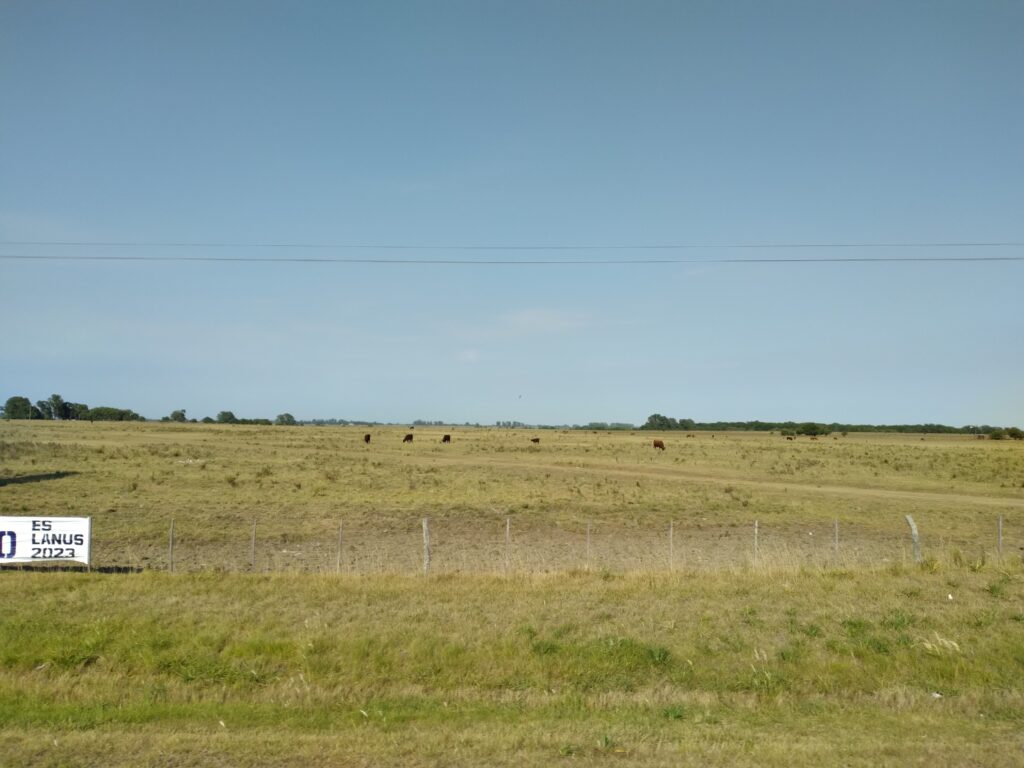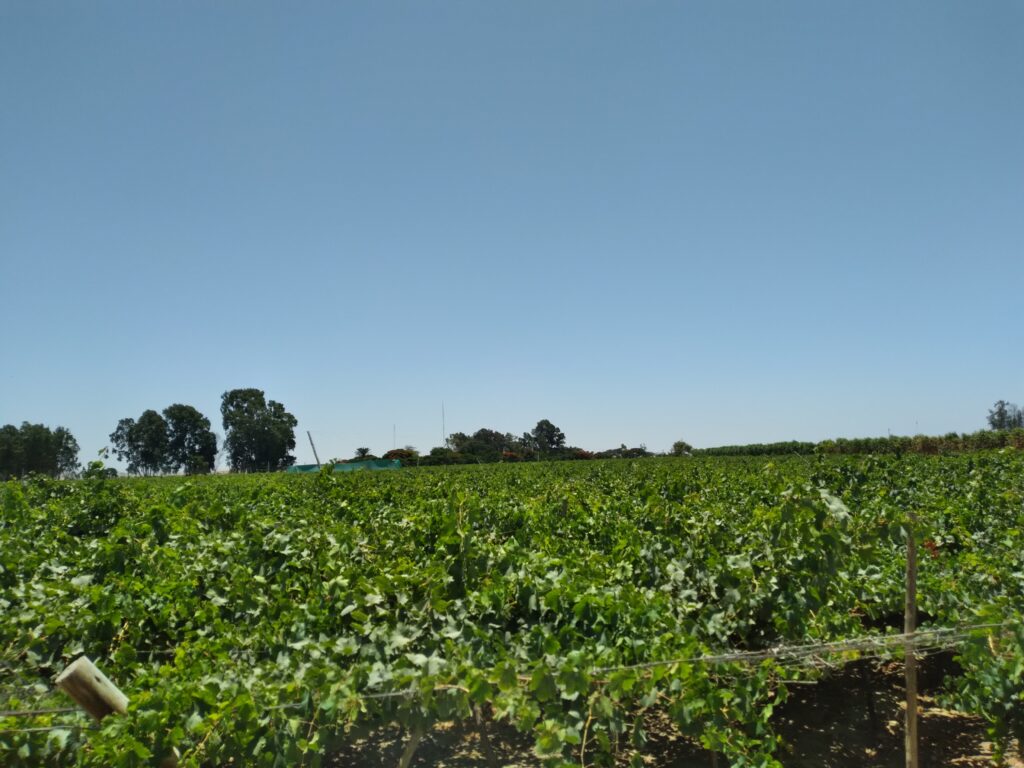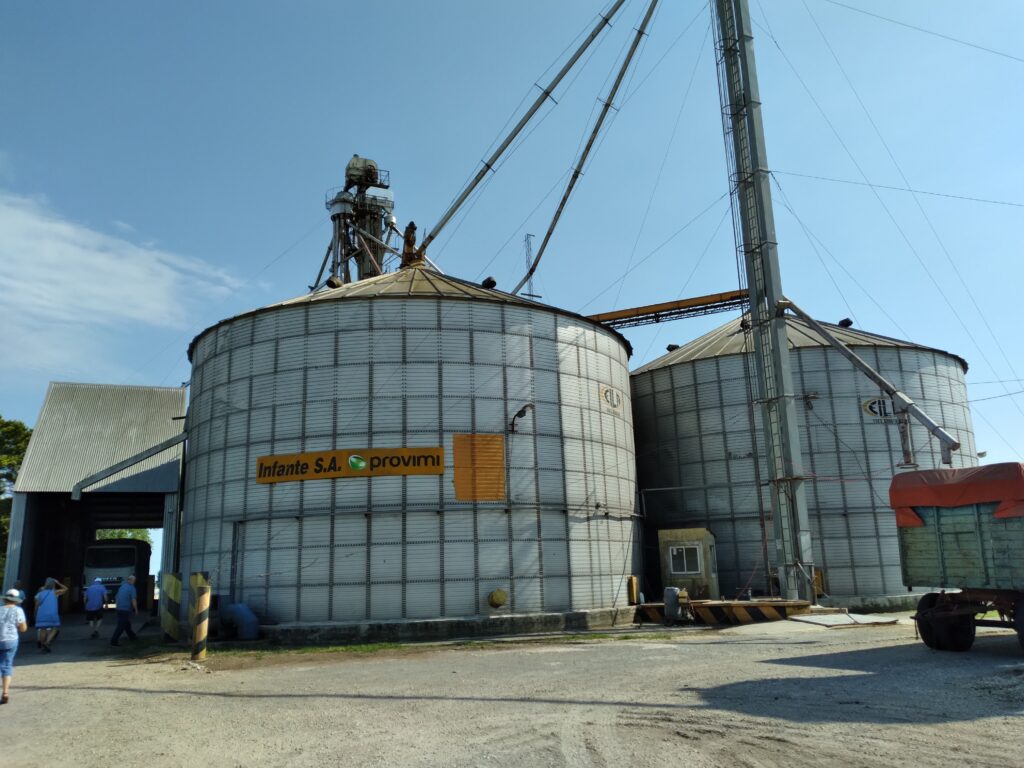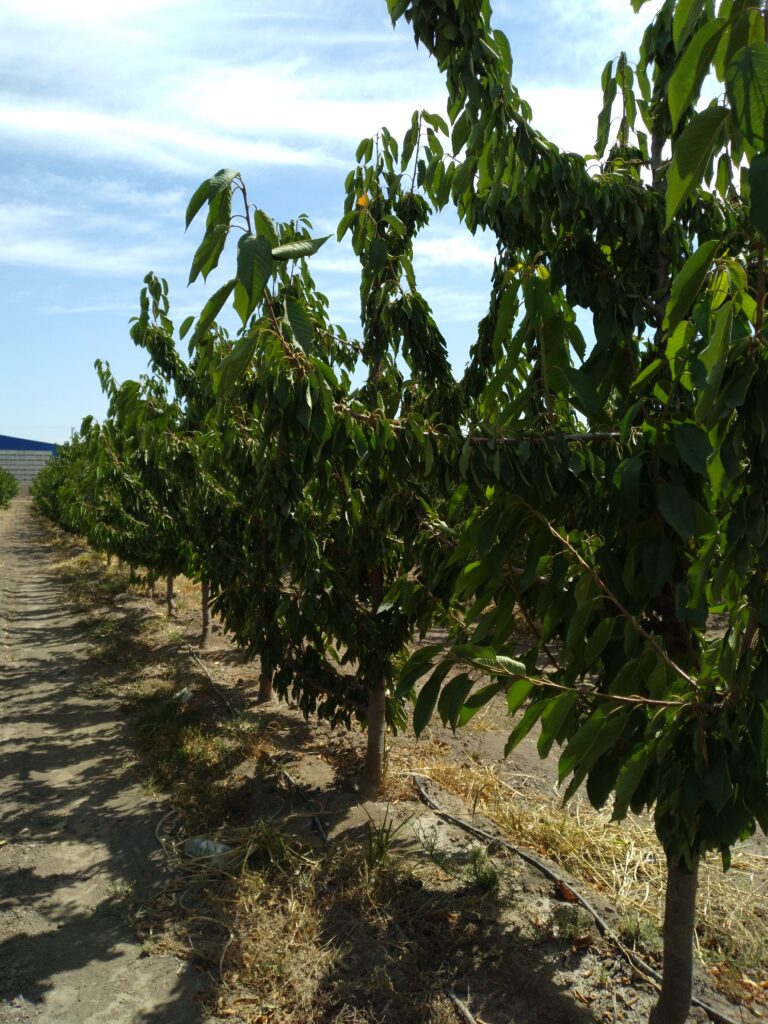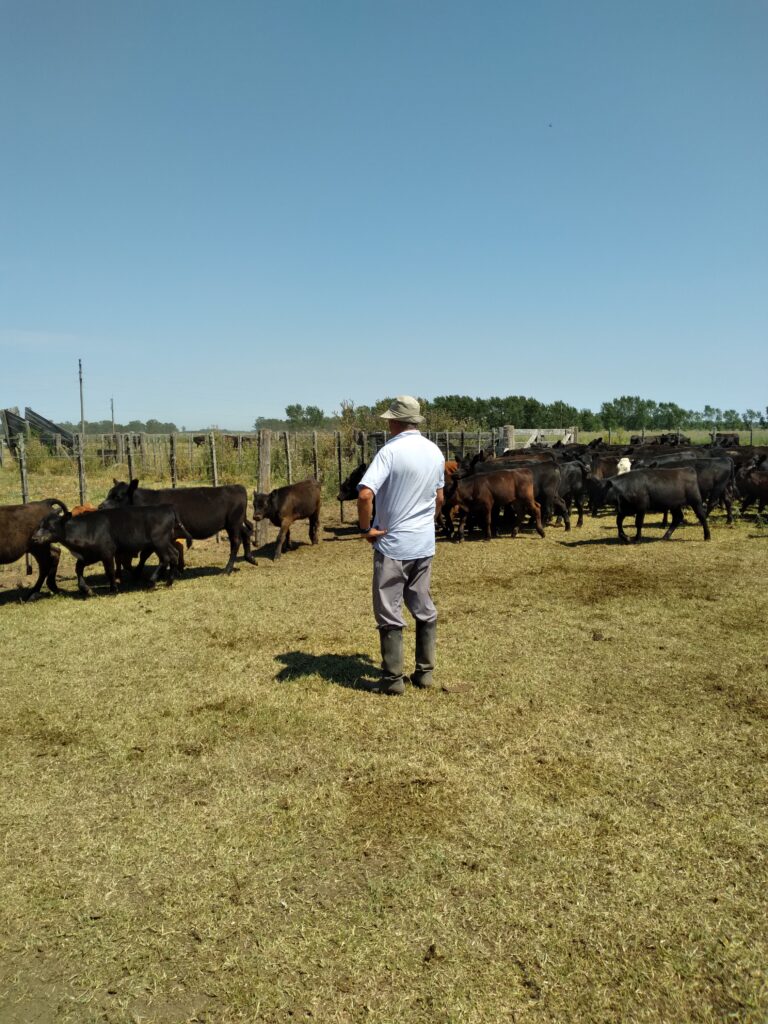Ever since I studied geography in fifth grade, I have had an interest in visiting South America. A couple of weeks ago, nearly 60 years after fifth grade, Shari and I took a trip to Peru, Chile, and Argentina. Due to political and civil unrest in Peru, we weren’t able to visit Machu Picchu so we left Peru and headed to Chile. While in Chile we visited a farm that grows cherries, almonds, and walnuts in the dry arid valley just south of Santiago. The farm was a modern operation with drip irrigation and mechanical harvesting and drying equipment. Most of what they grow is exported to other countries. We visited several tourist sites in Santiago, Chile, and then flew across the Andes Mountains to Argentina. Both Peru and Chile were more arid than I expected. The terrain reminded me of Arizona or New Mexico, maybe even drier.
The country of Argentina is very interesting. We learned that they are in the midst of a severe drought. Our interpreter told us that this season is the driest growing season in the past 100 years. While the normal rainfall is about 39 inches per year, they received about 20 inches last year. So far, they haven’t received any rainfall during this spring and summer growing season.
Argentina produces soybeans, corn, and wheat with very little irrigation because drilling wells and installing irrigation equipment is too expensive. They export most of their soybeans to China, Europe, and Africa. The price of soybeans in Argentina is determined by following the Chicago Board of Trade. However, the Argentine government keeps 35% of the soybean crop as a tax. Since most farmers rent the farming land from lawyers, bankers, and soccer players, the farmers pay an additional portion of their crop to the landowners as rent.
The Corn Belt in Argentina is the “Pampas” region south of Buenos Aires. The Pampas or low, flat land covers an area about 621 miles by 621 miles. Normal yearly corn production is about 50 million metric tons per year. Due to the La Nina drought, last year’s production was down to 40 million tons.
Wheat is also grown in the Pampas region. An average yearly yield of 20 million tons of wheat is normal. Wheat production was down to 11 million tons last year, again due to the severe drought. Argentina is expecting to have to import wheat this year to meet their domestic demand.
Sunflowers have been grown and exported from Argentina for about 30 years. The Russian War has caused changes in production. The price has gone up especially due to fertilizer issues. Sunflowers have a shorter growing season than corn. They are harvested in February. Sunflowers also need honey bees for pollination. Argentina is the only sunflower producing country in South America. Sunflower farmers are paid based on the weight and quality of sunflower oil. There are two varieties of sunflowers grown. The black variety produces better quality oi,l whereas the striped variety produces better yield by weight.
While urea is produced in Argentina, they have to look elsewhere for their phosphate needs. Most soils in Argentina are low in phosphorous. Until recently, they have imported a lot of their phosphate from Russia or Africa. However, the war with Ukraine has stifled phosphate imports from Russia. This may be good news for the Florida phosphate industry.
Argentina is also known for its quality beef production. Cattle are primarily raised on grass. We were told that calves are weaned at 180 days weighing around 260 pounds. After weaning, calves are moved to a refeeding pasture until they reach weights of about 400 pounds. From there they go to a winter finishing pasture and are fattened to about 880 pounds. Increasing numbers of cattle are then fed out with corn in feedlots but grass-fed beef is still common. One fact that I found very interesting is that pasture rent is determined by the price of soybeans. Pasture land rents for 22 bushels of soybeans per year or about $200.00 per acre per year. Cattle producers spend about 35% of their income on rent. Black Angus, Red Angus, and some Herefords make up most of their beef breeds found in the Pampas region. I was informed that some Brahman influence cattle are raised in the warmer part of the country. Overall cattle numbers are down due to the extensive drought.
Inflation is the greatest concern of farmers in Argentina. The country is currently facing a 95% inflation rate! They use three rates of money exchange. The official exchange rate is 180 pesos per dollar. There is also an exchange rate called the Blue Dollar rate. The Blue Dollar rate is currently 350 pesos per dollar. However, farmers are paid for their crops by the official rate and not the Blue Dollar rate. In addition, there is the black-market rate which is slightly higher than the Blue Dollar rate.
Farmers in Argentina are required to keep a perimeter around their farms where they are not allowed to use pesticides. This is required to keep the eco-friendly people happy but becomes a prolific weed problem for the farmers. Argentina farmers use a lot of the same chemicals that we use – Roundup herbicide, along with BASF, Syngenta, and Dow pesticides.
The number of dairy farms has decreased in the past 20 years. Only the very large dairies have survived. Dairy farmers are limited in their ability to store milk. To top that off, they must wait three months to be paid for the milk they deliver. Most of the dairies are located in the Cordova province, an area that we did not visit. Argentina exports a large amount of powdered milk to other countries.
While in the Pampas region, we visited with the Infante family who operate a grain storage facility. We met Juan Carlos Infante, his son Lucas, and his daughter Luisina. Their family started a grain storage business in 1929. Today they operate three locations and store about 9000 tons at each facility. Grains include wheat, corn, soybeans, and sunflowers. From the storage areas, grains are trucked to the seaport for export.
We had the opportunity to spend a day on a large “estanciero” (estate) or ranch. The estanciero is owned by Mrs. Laura Gandola and her family. Her late husband, Raul Fontela Vasquez unfortunately passed away not too long ago. Mrs. Gandola and her family own and operate about 1100 hectares (2750 acres) of beef cattle, corn, and soybeans. Their ranch manager is Dr. Miguel Armendoriz, a licensed veterinarian. They also have ventured into the agri-tourism industry during the past ten years. They host weddings, large party gatherings, and have added a few motel rooms to their house. Dr. Armendoriz manages cattle operations on two ranches and works with seven other ranches taking care of infectious disease issues.
I had the opportunity to ride with Mr. Bernabe Sanchez across the estanciero. Mr. Sanchez, or Bernie, has led an interesting life. He left Cuba with his family in 1960. After leaving Cuba, his family moved to Colorado and then to Argentina, where his father worked for the King Ranch, first in Cuba and then in Argentina. The King Ranch had a huge operation in Argentina many years ago. They were attempting to raise Santa Gertrudis cattle on two ranches, 19000 hectares total, or 47,500 acres. The Santa Gertrudis breed was not very successful in Argentina so the ranches were sold. Bernie worked as a leathersmith, silversmith, raised cattle, and continues to raise bees as pollinators for the sunflower farmers. Bernie, being fluent in English, serves as the translator for the estanciero’s tourism venture.
On our last day in Argentina, we visited a state-of-the-art cattle auction. The modern auction is about an hour’s drive outside of Buenos Aires. It opened in May of last year and replaced the original auction facility built in 1901 near the city. The auction operates three days per week with about 7000 head of cattle passing through daily. Cattle are sold in pens of 10 to 20 animals. There are 48 cattle brokers who buy the animals. Each broker has an office at the facility. We saw pens of older beef cattle, grass fed steers, and several pens of retired dairy cows being auctioned. We even saw a young man playing an accordion at the cattle auction.
Gaucho is the Spanish term for cowboy. However, there is a group of cowboys who go by the term “Bascos”. Bascos are a group of people who came from the Basque region of Spain near the French border. Bascos do not wear traditional cowboy hats. They wear beret type caps, and look tougher than the average gaucho. We were able to see them work the cows at the auction.
No matter where we travel in the world, we are able to meet good people in the agricultural profession. Argentina is no exception. If you ever get a chance to visit Argentina, be sure to stop by and say hello to my friend Bernie.


